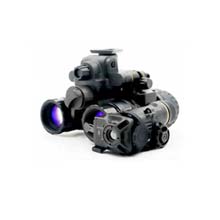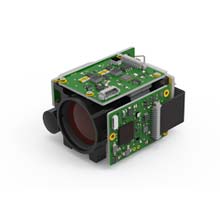Could Thermal Camera Transform Livestock Health Management

Livestock health management is a critical aspect of agriculture, directly influencing the well-being and productivity of animals. Traditionally, farmers have relied on manual methods and visual inspections to monitor the health of their livestock. However, the advent of technology brings new possibilities, and one promising tool in this regard is the thermal camera. In this article, we delve into the potential transformative impact of thermal cameras on livestock health management.

Understanding the Significance of Livestock Health Management
Ensuring the optimal health of livestock is paramount for the agricultural industry. Healthy animals contribute to increased productivity, better-quality products, and sustainable farming practices. The current challenge lies in the limitations of traditional monitoring methods, which often rely on visible symptoms and manual observations.

Unlocking the Power of Thermal Cameras
Thermal cameras, also known as infrared cameras, operate by detecting the heat emitted by objects. Unlike traditional methods that rely on visible cues, thermal imaging allows farmers to visualize temperature variations in real time. This technology has proven invaluable in various industries, and its application in livestock health management holds great promise.

Applications of Thermal Cameras in Livestock Health Management
1. Early Disease Detection
One of the significant advantages of thermal imagers is their ability to detect early signs of diseases and infections. Changes in body temperature often precede visible symptoms, and thermal imaging enables farmers to identify potential health issues before they become apparent. This early detection can significantly improve treatment outcomes and reduce the spread of diseases within a herd.

2. Monitoring Stress Levels
Livestock can experience stress due to various factors, including environmental conditions, overcrowding, or changes in routine. Thermal cameras provide a non-intrusive way to monitor stress levels by detecting changes in body temperature. Identifying and addressing stress promptly can improve the overall well-being of the animals and prevent potential health issues.
3. Environmental Condition Assessment
Thermal cameras can also be used to assess housing and environmental conditions. By visualizing heat patterns, farmers can identify areas with inadequate ventilation, insulation issues, or malfunctioning equipment. Addressing these issues proactively creates a more comfortable and conducive environment for livestock, positively impacting their health and productivity.

While thermal cameras offer substantial benefits, their integration into livestock health management is not without challenges. Factors such as initial costs, technical expertise, and potential privacy concerns need to be addressed. However, ongoing advancements in technology and increased awareness are gradually mitigating these challenges.
Looking ahead, the future of livestock health management could see even more advanced applications of thermal imaging technology. Continued research and innovation may lead to more affordable and user-friendly thermal imaging, making them more accessible to a wider range of farmers. The ongoing collaboration between technology developers and agricultural experts holds the key to unlocking further transformative possibilities.
The integration of thermal imaging cameras into livestock health management has the potential to revolutionize the way farmers monitor and care for their animals. From early disease detection to stress monitoring and environmental assessment, the applications are diverse and promising. While challenges exist, the ongoing advancements in technology and the positive outcomes reported by early adopters underscore the transformative impact of thermal cameras in enhancing the overall health and well-being of livestock.

















